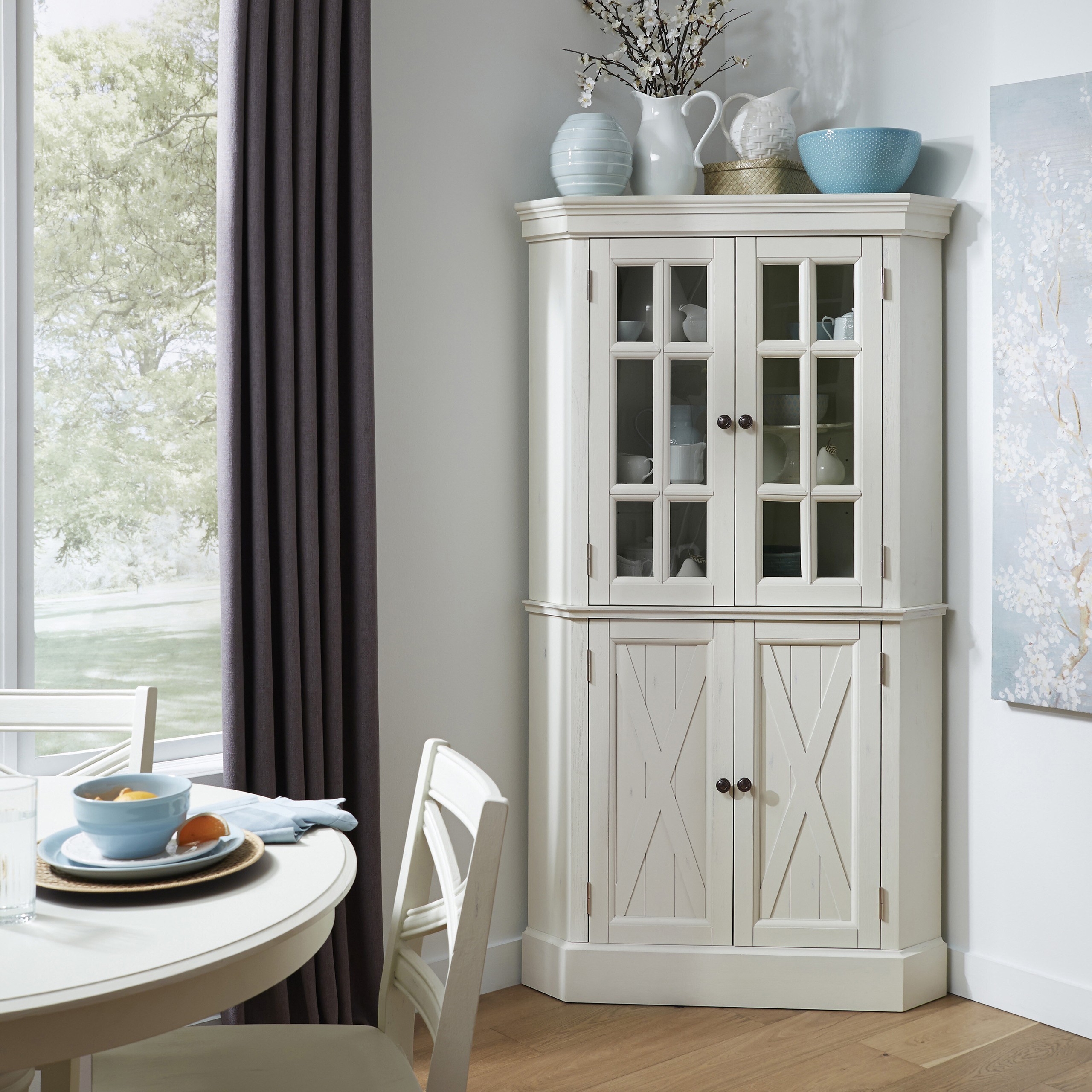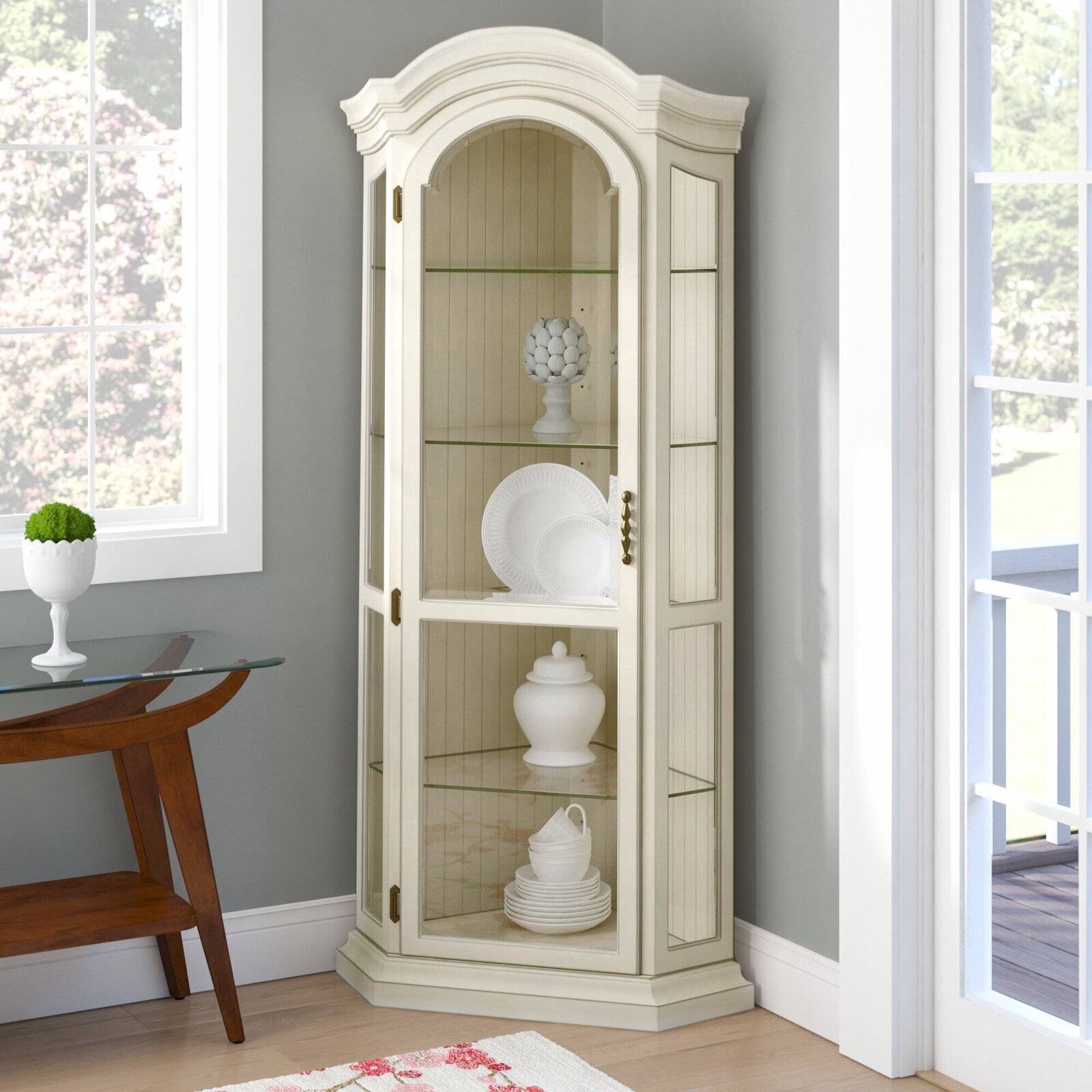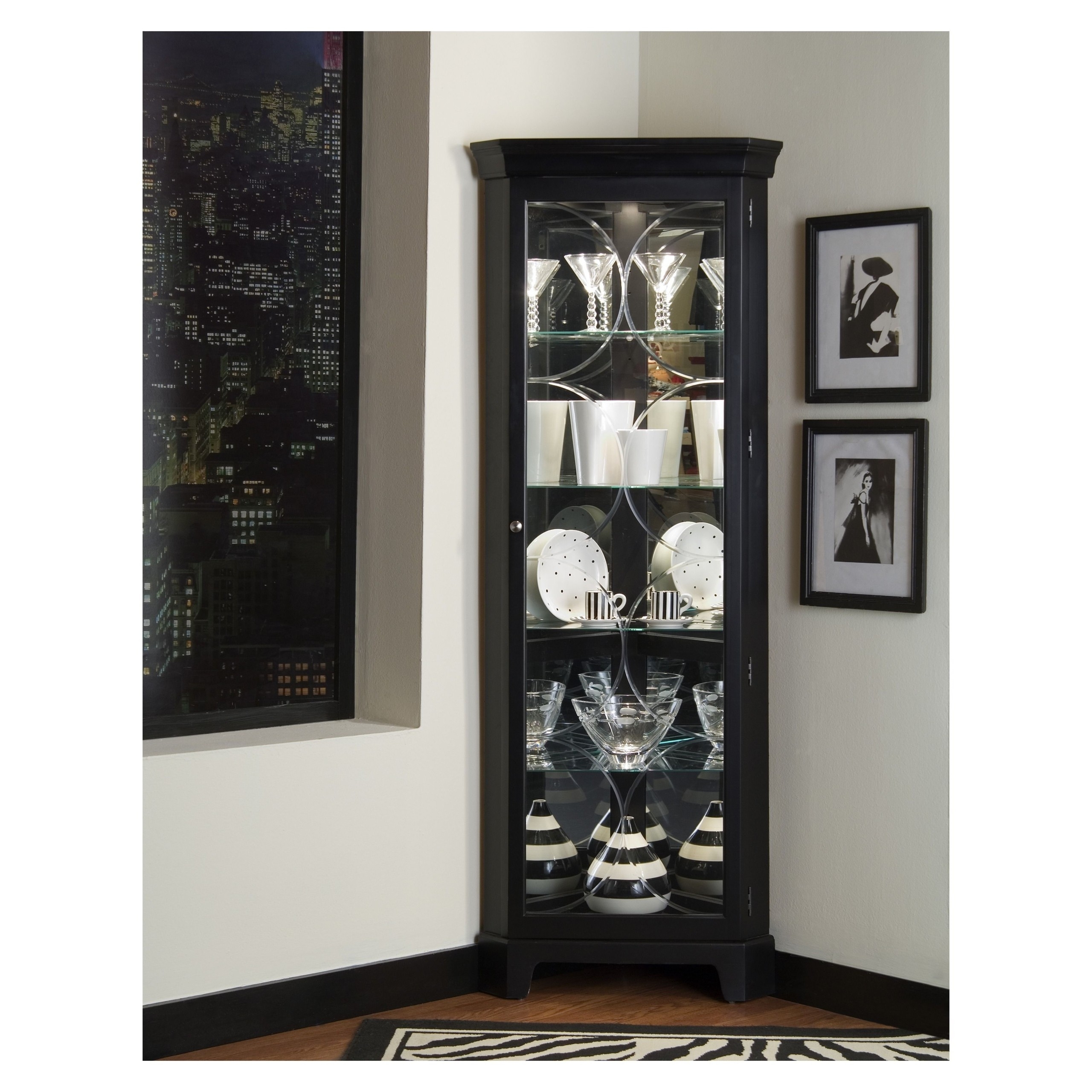Styles and Designs of White Corner China Cabinets

The ubiquitous white corner china cabinet, a staple in countless homes, transcends mere storage; it’s a statement piece reflecting personal aesthetic preferences and societal trends. The seemingly simple design belies a surprising diversity of styles, materials, and functionalities, each catering to a distinct design philosophy and practical needs. Understanding these variations is crucial for consumers navigating the often-overwhelming market.
White Corner China Cabinet Design Aesthetics
White corner china cabinets encompass a broad spectrum of design aesthetics, each with its own unique characteristics. Traditional styles often feature ornate carvings, detailed moldings, and possibly even glass-paned doors, evoking a sense of classic elegance. These pieces are frequently crafted from solid hardwoods like oak or mahogany, showcasing rich, warm finishes that complement the white paint. In contrast, modern designs prioritize clean lines, minimalist aesthetics, and often incorporate sleek metallic accents or glass shelving. Materials might include engineered wood or high-gloss lacquered finishes, contributing to a contemporary feel. Farmhouse styles blend rustic charm with practicality, often utilizing distressed white paint and simple hardware, reflecting a more casual and lived-in aesthetic. Shabby chic cabinets, similarly, embrace a sense of vintage charm, employing distressed finishes and delicate details, creating a romantic and slightly whimsical atmosphere. The choice of material significantly influences both the visual appeal and the durability of the cabinet.
Comparison of White Corner China Cabinet Styles
The following table compares various white corner china cabinet styles based on their material, storage capacity, and distinctive features. Note that storage capacity is relative and can vary significantly even within a style due to differences in dimensions and internal configuration.
| Style | Material | Storage Capacity | Notable Features |
|---|---|---|---|
| Traditional | Solid Oak, Mahogany | High; multiple shelves, drawers | Intricate carvings, glass-paned doors, ornate hardware |
| Modern | Engineered wood, lacquered MDF | Moderate; open shelving, potentially fewer enclosed spaces | Clean lines, minimalist design, sleek metallic accents |
| Farmhouse | Reclaimed wood, painted pine | Moderate to High; depending on size and design | Distressed white paint, simple hardware, possibly open shelving |
| Shabby Chic | Distressed wood, possibly painted MDF | Moderate; often incorporates smaller drawers and compartments | Distressed white paint, delicate details, possibly decorative hardware |
A Unique White Corner China Cabinet Design
Imagine a white corner china cabinet crafted from reclaimed pine, its surface bearing the subtle patina of age and use. The distressed white paint reveals glimpses of the wood’s natural grain, lending a sense of rustic authenticity. The cabinet features a unique curved design, softening its angular form and enhancing its visual appeal. Intricate, hand-carved details adorn the crown molding and the base, showcasing the skill of the artisan. The glass-paned doors, framed in lightly distressed white, offer a captivating view of the displayed china, while the interior boasts multiple adjustable shelves, maximizing storage capacity. The hardware, comprised of aged brass knobs and hinges, complements the overall aesthetic, creating a piece that seamlessly blends modern functionality with vintage charm. The overall effect is one of understated elegance, a testament to both timeless design and skilled craftsmanship. The gentle curve of the cabinet, coupled with the intricate carvings and the warm tones of the aged wood peeking through the white paint, creates a piece that is both visually striking and deeply comforting. It’s a piece that tells a story, not only of the craftsmanship but also of the home and family it graces.
Placement and Integration of White Corner China Cabinets in Home Decor

The strategic placement of a white corner china cabinet is paramount; it’s not merely about finding a space, but about orchestrating a visual narrative within the home’s design. A poorly placed cabinet can overwhelm a room, while a thoughtfully positioned one can elevate the entire aesthetic. This section analyzes optimal placement techniques and their impact on various interior design schemes.
Optimal Placement Strategies in Different Room Types
The ideal location for a white corner china cabinet is heavily dependent on the room’s size, existing furniture arrangement, and the desired ambiance. In a spacious living room, a large, ornate cabinet might serve as a striking focal point, positioned near a fireplace or a large window to maximize its visual impact. Conversely, a smaller, more minimalist cabinet would be better suited to a compact living room, perhaps tucked into a less prominent corner to avoid overwhelming the space. In dining rooms, the cabinet should ideally complement the dining table and chairs, creating a cohesive dining ensemble. Kitchens, depending on their layout, might benefit from a smaller, more functional cabinet for storing frequently used dishes, placed near the dining area or breakfast nook. The cabinet’s size directly dictates its suitability for each room; oversized cabinets in small rooms create a cramped, cluttered atmosphere, while undersized cabinets in large rooms look insignificant and wasted. Similarly, a highly decorative cabinet in a minimalist setting can clash, demanding a more traditional or eclectic space to thrive.
White Corner China Cabinets and Interior Design Styles
The versatility of white corner china cabinets allows them to seamlessly integrate into diverse interior design styles. However, careful consideration must be given to the cabinet’s style and the room’s overall aesthetic. A poorly chosen cabinet can disrupt the carefully crafted visual harmony.
- Minimalist Design: A sleek, minimalist white corner china cabinet with clean lines and simple hardware complements a minimalist setting. The cabinet’s stark white enhances the overall sense of spaciousness and order. Avoid ornate detailing or overly decorative elements. Pair it with light-colored walls and uncluttered surfaces.
- Eclectic Design: An eclectic interior welcomes a white corner china cabinet with unique features, perhaps with a distressed finish or interesting hardware. This cabinet can act as a unifying element, tying together various design elements and textures. The cabinet’s white provides a neutral backdrop for more colorful and textured accessories.
- Victorian Design: A more ornate white corner china cabinet, possibly with detailed carvings or glass panels, is suitable for a Victorian setting. The cabinet’s white provides a bright contrast against darker, richer colors often found in Victorian interiors. The cabinet’s detailing should complement the overall richness of the room.
Three Room Settings Featuring a White Corner China Cabinet
The following illustrate the transformative power of a white corner china cabinet when integrated into different room settings.
Living Room Setting 1: Modern Minimalism
A sleek, white corner china cabinet with brushed nickel hardware sits in a corner of a modern living room with pale gray walls and light oak flooring. The cabinet is sparsely adorned, showcasing a few carefully selected pieces of porcelain. A light gray sofa, a low-profile coffee table, and a simple area rug complete the setting, creating a serene and sophisticated ambiance. The overall aesthetic emphasizes clean lines and functionality.
Dining Room Setting 2: Classic Elegance
A white corner china cabinet with glass doors and detailed molding is positioned in a formal dining room with cream-colored walls and dark hardwood floors. The cabinet displays a collection of fine china and crystal, complementing a mahogany dining table and elegant chairs. A large crystal chandelier hangs above, casting a warm glow over the space, emphasizing the room’s classic and refined character.
Kitchen Setting 3: Rustic Charm
A smaller, white corner china cabinet with a slightly distressed finish is nestled in a farmhouse-style kitchen. The cabinet is paired with open shelving, displaying vintage crockery and kitchenware. The cabinet’s white contrasts with the warm tones of the wooden cabinets and countertops, creating a cozy and inviting atmosphere. Rustic accents, such as a vintage enamel sink and wrought iron lighting fixtures, complement the overall design.
Care and Maintenance of White Corner China Cabinets

Maintaining the pristine appearance of a white corner china cabinet requires diligent care. The delicate nature of the finish, whether it be paint, lacquer, or veneer, necessitates a proactive approach to prevent damage and preserve its value. Ignoring proper maintenance can lead to irreversible damage, diminishing the cabinet’s aesthetic appeal and potentially impacting its structural integrity. Therefore, understanding and implementing the correct cleaning and preventative measures is crucial for long-term preservation.
Cleaning Methods and Products for White Corner China Cabinets
Effective cleaning hinges on using the right tools and techniques. Harsh chemicals, abrasive cleaners, and excessive moisture are enemies of a white finish. Gentle cleaning methods are paramount. Microfiber cloths are ideal for dusting, while a slightly damp (not wet) cloth, with a mild soap solution like a pH-neutral dish soap, can tackle minor spills or smudges. Always test any cleaning solution in an inconspicuous area first to check for adverse reactions. Avoid harsh scrubbing, which can scratch the surface. For stubborn stains, consider a specialized wood cleaner designed for delicate finishes. Always rinse thoroughly and dry immediately with a clean, soft cloth to prevent watermarks.
Preventative Measures to Protect the Cabinet from Damage
Proactive measures are far more effective than reactive repairs. The following steps will significantly extend the life and beauty of your white corner china cabinet:
- Protect from Moisture: Avoid placing the cabinet near sources of excessive moisture, such as sinks, dishwashers, or humidifiers. Consider using a dehumidifier in damp climates to control humidity levels. Wipe up spills immediately to prevent water damage and staining.
- Use Coasters and Placemats: Always use coasters under glasses and placemats under dishes and serving platters to prevent scratches and water rings on the surface. This is especially important on the top of the cabinet, which is prone to wear and tear.
- Avoid Direct Sunlight: Prolonged exposure to direct sunlight can cause fading and discoloration of the white finish. Position the cabinet away from windows receiving direct sunlight, or use UV-filtering curtains or blinds.
- Regular Dusting: Regular dusting prevents the accumulation of dust and grime, which can scratch the surface over time. Dust at least once a week with a soft, dry microfiber cloth.
- Handle with Care: Avoid bumping or jarring the cabinet. When moving or rearranging items inside, do so gently to prevent scratches and damage.
- Use Furniture Pads: Place protective felt pads or rubber bumpers on the bottom of the cabinet to prevent scratches on the floor and protect the cabinet’s base from moisture.
Maintaining White Furniture: A Revised Article
The allure of white furniture lies in its timeless elegance, but maintaining its pristine condition requires careful attention. Ignoring proper care can lead to irreversible damage, such as scratches, discoloration, and watermarks. Regular dusting with a soft cloth is essential. For cleaning, use a mild soap and water solution, avoiding harsh chemicals. Always test any cleaning product in an inconspicuous area first. Direct sunlight can cause fading, so position furniture away from windows. Use coasters and placemats to protect surfaces from spills and scratches. Regular maintenance will significantly prolong the life and beauty of your white furniture.
